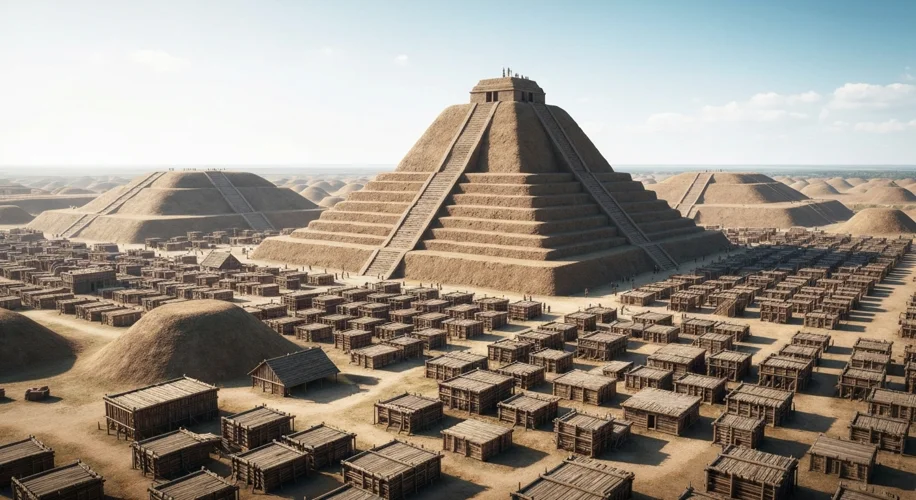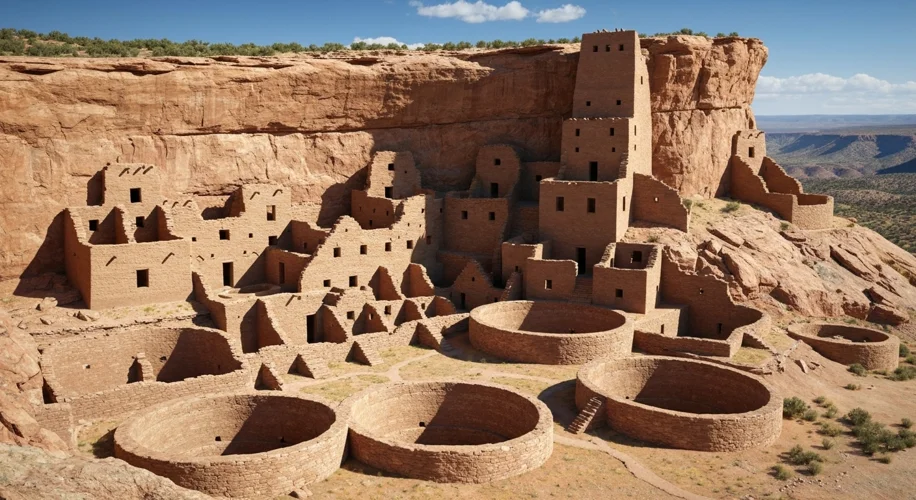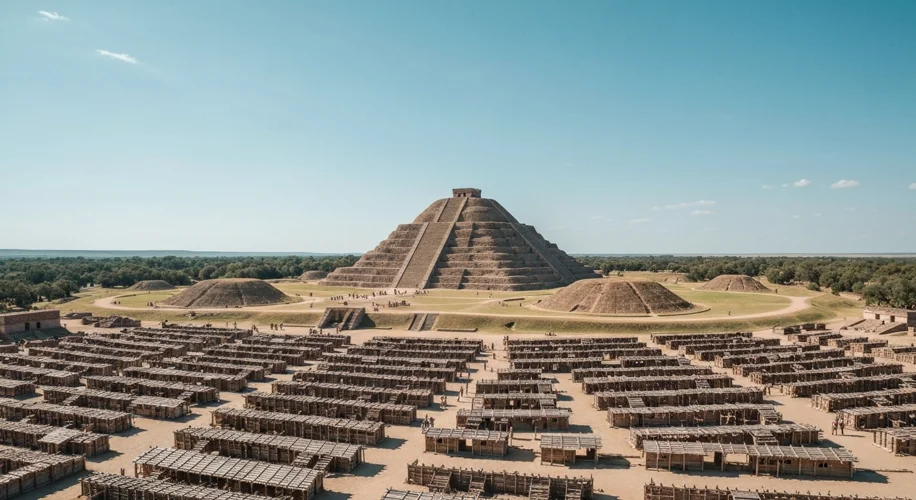In the vast tapestry of North American history, threads of forgotten civilizations lie hidden, woven into the very earth beneath our feet. Long before European ships cleaved the Atlantic waves, vibrant urban centers pulsed with life, testaments to the ingenuity and complexity of Native American societies. These were not mere villages, but sophisticated cities, boasting populations, intricate governance, and architectural marvels that rivaled those of the Old World.
One of the most astonishing examples is Cahokia, located in present-day Illinois, near St. Louis. Flourishing between roughly 1050 and 1350 CE, Cahokia was the apex of the Mississippian culture. At its zenith, its population may have exceeded 10,000 people, making it larger than London was at the time. The heart of Cahokia was Monk’s Mound, an immense, stepped earthen pyramid that covers over 14 acres and rises 100 feet into the sky. Imagine standing at its summit, surveying a sprawling city of wood, thatch, and pottery, a bustling hub of trade and ceremony.

The scale of Cahokia’s construction is staggering. The inhabitants moved an estimated 55,000 cubic yards of earth to build Monk’s Mound alone, a monumental undertaking that required immense organization and a deep understanding of their environment. Beyond the mounds, evidence suggests a highly structured society. A wooden palisade encircled the city’s core, likely for defense, and outlying settlements supported the urban center. The inhabitants were skilled farmers, cultivating maize, beans, and squash, and their trade networks extended across much of eastern North America, evidenced by the presence of exotic goods like copper from the Great Lakes and shells from the Gulf Coast.
However, Cahokia’s story is also one of mystery. By the 14th century, the city was largely abandoned. The reasons remain a subject of debate among archaeologists. Theories range from environmental degradation and resource depletion to social unrest or a combination of factors. Whatever the cause, the sudden decline left behind silent mounds and enigmatic plazas, whispering tales of a once-thriving civilization.
Further west, in the stark beauty of the desert Southwest, another remarkable urban tradition flourished: the Ancestral Puebloans, often referred to as the Anasazi. While not as densely populated as Cahokia, settlements like Pueblo Bonito in Chaco Canyon, New Mexico, represent a pinnacle of North American urban planning and architecture. Built between 900 and 1150 CE, Pueblo Bonito is a massive, D-shaped structure composed of over 600 rooms and 35 kivas (ceremonial chambers).

Chaco Canyon, a UNESCO World Heritage site, was the center of a vast network of roads, some stretching for hundreds of miles. These roads, often unnaturally straight, suggest a sophisticated system of communication and transportation, connecting dispersed communities to this ceremonial and administrative hub. The Ancestral Puebloans were master stonemasons and builders, creating structures that have endured for centuries. Their agricultural practices, including intricate irrigation systems, allowed them to thrive in an arid environment.
The decline of Chaco Canyon and other Ancestral Puebloan centers in the 13th century is also shrouded in a degree of mystery, though environmental factors, particularly prolonged drought, are widely believed to have played a significant role. The eventual migration of its people led to the development of new Pueblo communities in areas like the Rio Grande Valley and Arizona.
These lost cities are not mere archaeological curiosities; they are vital reminders of the depth and sophistication of pre-Columbian societies. They challenge simplistic narratives of North American history and underscore the profound connection Indigenous peoples had with their land. The ongoing work of archaeologists and Native American communities continues to illuminate these forgotten metropolises, revealing a rich legacy that deserves to be remembered and understood. The echoes of these ancient urban centers still resonate, calling us to listen to the stories etched in stone, earth, and time.

